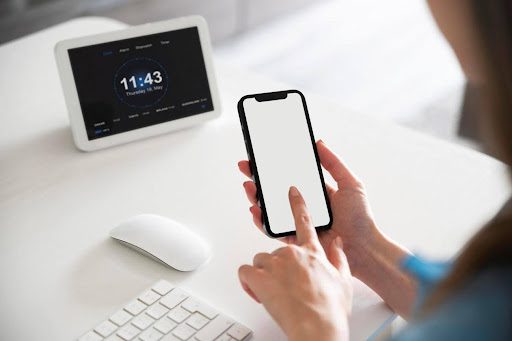1. Understanding the Risks Behind Mobile Micropayments
I still remember the shock on my sister’s face when she discovered nearly ₩300,000 in unexpected charges on her phone bill. Someone had somehow accessed her device and made several small payments for online game items without her knowledge. It was a nightmare trying to dispute those charges with her mobile carrier.
Mobile micropayments might seem convenient—just a few clicks and you’ve purchased that game item or digital content—but they open up surprising security vulnerabilities that many of us overlook. These small transactions, often bypassing the traditional bank verification processes, can add up quickly and create serious security headaches.
Unlike credit card transactions that typically require multiple verification steps, micropayments through your phone bill can sometimes happen with minimal authentication. This streamlined process is exactly what makes them appealing to both legitimate users and potential fraudsters.
The data trail from these micropayments can be extensive too. Each transaction potentially reveals bits of your behavior patterns, purchasing preferences, and even location data in some cases. While one small payment might not seem like much information to expose, the aggregate data over time creates a surprisingly detailed profile that could be misused.
What worries me most is how these systems often interconnect with multiple services. Your phone carrier, payment processor, the merchant, and sometimes additional third parties all potentially have access to different aspects of your transaction data. Each connection point represents a potential vulnerability where your information could be compromised.
2. Setting Up Strong Device Authentication Barriers
My cousin used to use a simple swipe pattern to unlock his phone—until the day his coworker watched him unlock it and later accessed his payment apps during lunch break. The embarrassment and financial stress taught him a valuable lesson about basic device security.
Your device’s lock screen is literally the first line of defense protecting your digital financial life. Treating it casually is like leaving your wallet open on a public bench—something most of us would never consider doing in the physical world.
Biometric authentication options have dramatically improved in recent years. Modern fingerprint readers have false acceptance rates below 0.001%, making them significantly more secure than traditional PINs or patterns. Facial recognition systems on premium phones now use depth mapping technology that can’t be fooled by photographs.
For maximum security, configure a multi-layered approach: use biometrics for convenience but require a strong alphanumeric password after device restarts or multiple failed biometric attempts. This creates redundancy in your security system.
Consider enabling “Lockdown Mode” (available on newer Android phones) or similar features that immediately disable biometric authentication in situations where you feel vulnerable—like when traveling through high-risk areas or crossing border checkpoints where you might be compelled to unlock your device.
Some payment apps also allow you to configure a separate authentication mechanism that differs from your phone’s main lock screen. Take advantage of this feature when available—it creates yet another security layer protecting your financial transactions.
3. Configuring App-Specific Privacy Settings
Last month during a family dinner, my uncle proudly showed us how he had installed a new shopping app offering great discounts. When I noticed it had full access to his contacts, location, messages, and even phone call history, he was genuinely shocked—he had simply clicked “allow” on all permission requests without reading them.
Payment apps are notorious for requesting excessive permissions that have nothing to do with their core functionality. A careful review of these permissions can dramatically reduce your data exposure without affecting the app’s usability.
Location permissions are particularly problematic for payment applications. While merchants may want this data for marketing purposes, continuous location tracking is rarely necessary for the payment process itself. Configure these apps to access location “only while using the app” or, better yet, “ask each time” if such options are available on your device.
Camera and photo library access should be granted cautiously. While scanning QR codes might require camera access, full photo library access is rarely necessary for payment functionality. Consider granting temporary permissions when needed for specific functions rather than permanent access.
Microphone permissions are almost never required for payment applications, yet many request this access. Deny these permissions unless you specifically use voice features within the app—something that’s rare in legitimate payment applications.
The 상품권소액결제 service, despite its popularity, was called out in a consumer report last year for requesting excessive permissions that weren’t clearly justified in their privacy policy. Always question why any payment service needs access to particular features on your device.
4. Creating Isolated Payment Environments
After my wallet was stolen two years ago, I spent weeks updating payment information across dozens of services. That experience taught me the value of compartmentalizing my digital financial life—a strategy that’s saved me countless headaches since.
Consider creating a dedicated financial profile on your device if your operating system supports multiple user profiles. This separation creates a clear boundary between your general apps and those handling sensitive financial information.
For Android users, work profiles (available through apps like Island or Shelter even without enterprise enrollment) can create an isolated environment for financial apps that prevents other applications from accessing their data. This approach essentially creates a “financial sandbox” on your device.
Another effective strategy is using secure folders (available natively on Samsung devices or through third-party apps on other Android phones). These encrypted spaces require separate authentication and keep financial applications isolated from potentially compromised apps in your main environment.
Some may find it inconvenient to switch between profiles or enter secure folders for transactions, but this minor friction provides substantial security benefits. The few extra seconds spent accessing a separate environment could save you from major financial headaches down the road.
For iOS users, while the system doesn’t support traditional user profiles, you can achieve some isolation by using different Apple IDs for financial apps versus general usage apps. This creates separation between payment information and other services.
5. Managing Digital Payment Cards and Tokens
I made a careless mistake last year that still makes me cringe—I saved my actual credit card details directly in five different shopping apps for convenience. When one of those retailers experienced a data breach, I had to cancel my card and update payment information everywhere. It was a harsh lesson in the importance of tokenization.
Digital payment cards and tokenization technologies have revolutionized mobile payment security by replacing your actual card numbers with unique tokens that are useless if intercepted or stolen. However, these systems require proper configuration to maximize their protection potential.
When using mobile wallets like Samsung Pay, Google Pay, or Apple Pay, verify that they’re generating unique tokens for each merchant rather than sharing your actual card details. This tokenization creates a situation where even if a merchant’s system is compromised, your actual card details remain secure.
Pay attention to virtual card services offered by many banks and financial institutions. These allow you to generate limited-use card numbers with customizable spending limits and expiration dates—perfect for one-time purchases or subscriptions where you want to limit potential exposure.
Consider keeping a dedicated low-limit payment method exclusively for mobile micropayments. This approach contains potential damage—if this payment method is compromised, your primary financial accounts remain unaffected.
For recurring micropayments, regularly audit which services have your payment information stored. Many of us sign up for services and forget about them, leaving payment details scattered across dozens of databases. Use a periodic calendar reminder to review and eliminate unnecessary payment connections.
6. Securing Against Network Vulnerabilities
The airport WiFi seemed legitimate, so I didn’t think twice about checking my bank balance while waiting for my flight. Two days later, suspicious transactions appeared in my account. That expensive lesson taught me to never trust public networks with financial data.
Mobile micropayments are particularly vulnerable to network attacks because they often occur spontaneously when we’re away from secure home networks. Understanding how to protect these transmissions is crucial for maintaining financial security.
Public WiFi networks present significant risks for any financial transaction. These networks are often unencrypted or use outdated security protocols that can be easily compromised. Even networks requiring passwords can be vulnerable if those passwords are widely shared (like in cafés or hotels).
Consider implementing a always-on VPN (Virtual Private Network) on your device. Modern VPN services are user-friendly and create an encrypted tunnel for all your data, even when connected to compromised networks. While this adds a small monthly cost, it provides protection across all your online activities, not just payments.
DNS-over-HTTPS is another technology worth enabling on your devices and browsers. This feature encrypts your domain lookups, making it harder for attackers to redirect you to fake payment sites through DNS hijacking—a common attack vector for payment fraud.
Be particularly vigilant about network security when traveling internationally. Foreign networks may operate under different security standards or regulations, potentially exposing your data to additional risks. Consider using a travel-specific device with minimal personal information for essential transactions when abroad.
7. Configuring Fraud Alerts and Transaction Monitoring
My friend ignored a transaction alert thinking it was just another annoying notification. That split-second decision cost her nearly ₩500,000 before she realized unauthorized payments were being processed through her phone. Now she treats every alert as potentially critical.
Proper notification configuration forms an essential component of your micropayment security strategy. These alerts serve as your early warning system against unauthorized access and fraudulent transactions.
Most carriers and payment providers offer customizable alert thresholds. Instead of setting these at high amounts, consider configuring alerts for all transactions or setting very low thresholds. While this may increase the frequency of notifications, it ensures you’re immediately aware of any unauthorized activity, no matter how small.
Explore real-time notification options beyond SMS. Push notifications are generally more secure than text messages, which can be intercepted through SIM swapping attacks. Email notifications provide a secondary alert channel and create a documented history of your transactions.
Consider enabling location-based verification if your payment provider offers this feature. This security layer flags transactions that occur in unusual locations compared to your normal patterns, adding another dimension to your security profile.
Review your transaction history regularly, not just when you receive alerts. Some fraudulent activities start with tiny “test” transactions that might fall below notification thresholds. Weekly reviews of your payment history can help identify these early warning signs before major fraud occurs.
8. Creating Emergency Response Plans for Security Breaches
When my phone was stolen last summer, panic set in as I realized all my payment apps were potentially exposed. I had no idea who to call first or what accounts needed immediate attention. That chaotic experience taught me the value of having a prepared response plan.
Planning for security incidents before they happen dramatically improves your ability to contain potential damage and recover quickly. Having clear procedures established in advance removes the burden of making complex decisions during the stress of an actual breach.
Start by creating a digital and physical list of all accounts connected to your mobile micropayments, including contact information for customer support. Store the physical copy in a secure location and the digital version in an encrypted file or password manager.
Establish priority order for account notifications in case of device compromise. Generally, you’ll want to contact your mobile carrier first to prevent SIM swapping, followed by banking institutions, and then individual payment services—but this may vary based on your specific usage patterns.
Familiarize yourself with the fraud reporting procedures for each payment service you use. Some require specific forms or evidence documentation that can be difficult to produce if you’re unprepared. Understanding these requirements in advance can significantly speed up the recovery process.
Consider preparing evidence collection procedures for potential incidents. Knowing how to properly document unauthorized transactions (screenshots, transaction IDs, timestamps) can make a significant difference in how quickly service providers resolve fraud claims in your favor.
Test your response plan periodically by running through the procedures as if an actual breach had occurred. This practice helps identify gaps in your preparation and ensures you can act quickly when minutes matter during a real security incident



